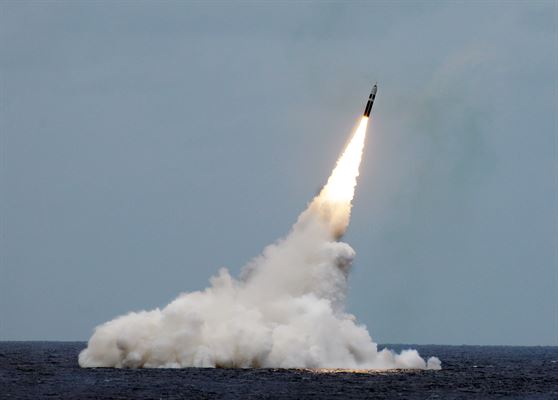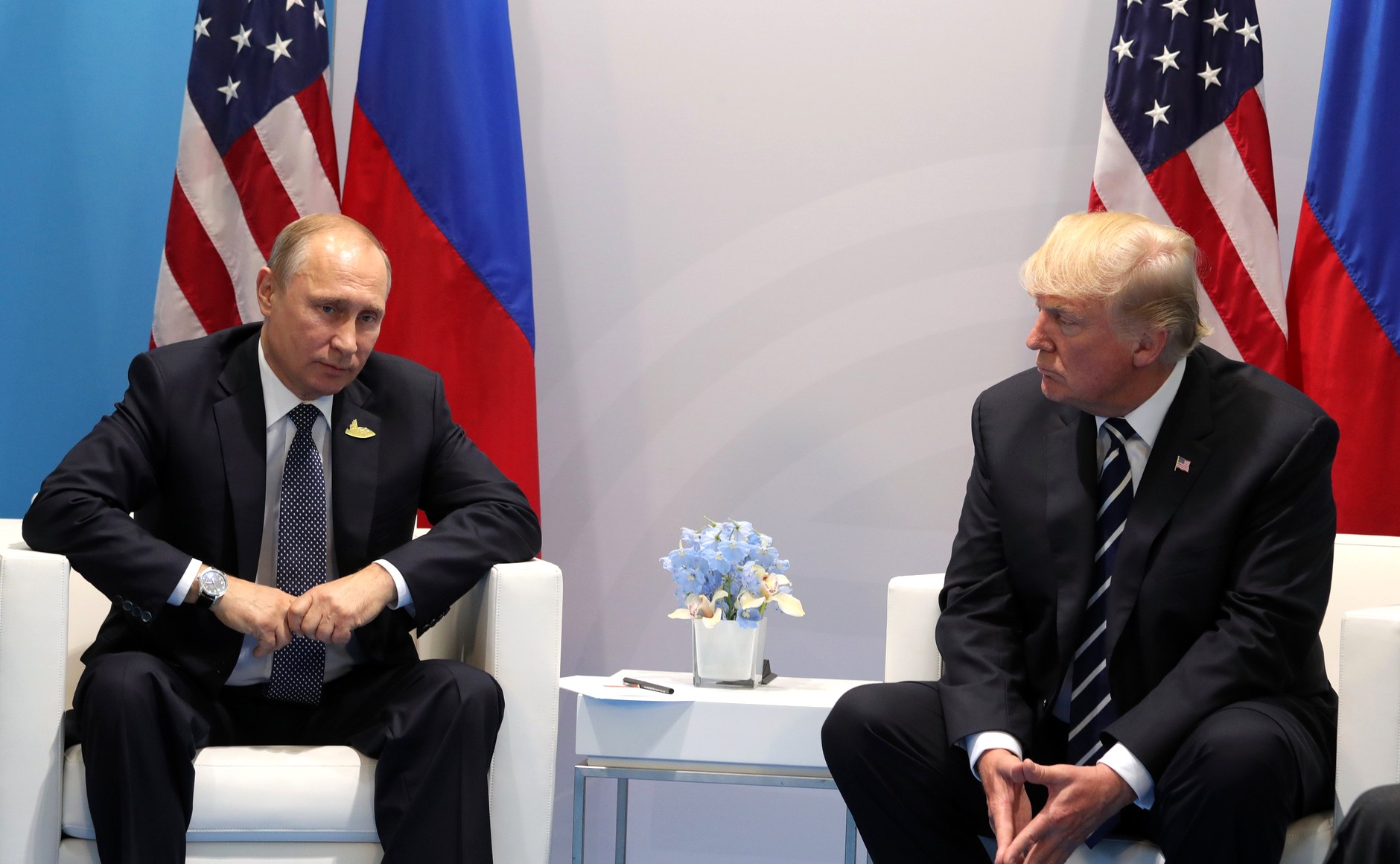
On nuclear doctrine, Washington and Paris have always differed on several points but stayed aligned on key principles. Will the new U.S. Nuclear Posture Review (NPR) create a gap between these two allies’ approach to nuclear weapons? This commentary assesses the 2018 NPR and identifies the convergences and divergences between current American and French nuclear policies. I argue that, despite some new aspects of the 2018 NPR, the US and French nuclear doctrines remain convergent, even if some of the new additions in the NPR replay the historical differences between the two countries, particularly on limited nuclear war.
Analysis of French nuclear policy is usually based on presidential statements on deterrence. These traditionally constitute the core of France’s declaratory policy, with one major statement on deterrence for each presidential term. President Macron has not delivered one yet, but he has already signaled his strong commitment to France’s nuclear deterrent through a presidential visit to the submarine “le Terrible” in early July 2017 and in a speech on defense delivered at Istres air base later that month. Moreover, President Macron has endorsed the French Strategic Review of Defense and National Security (SR) which includes key paragraphs dedicated to nuclear deterrence. [1]
The recently released Nuclear Posture Review (NPR) confirms that nuclear weapons play a crucial role in the U.S. national security strategy. It explains that, given the current and future international context, “U.S. nuclear weapons remain necessary to prevent war and safeguard the Nation”. As with the 2010 NPR “vital interests” remain at the core of the U.S. nuclear doctrine. The current NPR states, “For any President, the use of nuclear weapons is contemplated only in the most extreme circumstances to protect our vital interests and those of our allies” [emphasis added]. [2] The concept of “vital interests” is also a key part of French nuclear policy and is an important similarity between the U.S. and France. The 2017 French SR states that nuclear deterrence “protects us from any aggression against our vital interests emanating from a state, wherever it may come from and whatever form it may take” [emphasis added]. Moreover, for both countries, “vital interests” include a dimension beyond the national context:
- the U.S. affirms that they would defend “the vital interests of the United States, its allies, and partners”;
- France explains “the definition of our vital interests cannot be restricted to the national scope”.
These two strong and important statements concern the protection of allies. The non-national dimension of nuclear deterrence is a crucial element of both security strategies. But they also reflect a major point of difference. France insists that its nuclear deterrent “contributes to the security of the Atlantic Alliance and that of Europe”. However it does not have extended deterrence agreements with partners. The U.S. does, which explains other doctrinal differences. For example, the U.S. does not mention self-defense whereas France attaches paramount importance to this principle, as enshrined in the UN Charter. It regularly reaffirms that the use of nuclear weapons would be conceivable only in “extreme circumstances of self-defense” while the U.S. only mentions “extreme circumstances”. Still, both use the term “extreme circumstances” to characterize their nuclear threshold.
Since the US and France’s doctrines relies on the notion of “vital interest, the U.S. they emphasize the depth of the damage that could be caused by a potential aggressor but not the nature of the potential threat or attack. Neither are guided by a sole purpose policy establishing that nuclear weapons are only to deter a nuclear attack and neither have adopted no-first-use policies. In that sense, both believe that ambiguity is pivotal for deterrence. Yet ambiguity is not used for offensive purposes, or to intimidate, but to prevent potential adversaries from assuming that at a certain level of aggression these countries would not risk a nuclear retaliation.
The French nuclear doctrine insists that it must preserve the “life” of the Nation, “whatever the means used by the state adversary”. [3] The 2018 NPR expresses it differently, affirming that U.S. nuclear forces contribute to the “deterrence of nuclear and non-nuclear attack”. At first glance the phrasing is different but the meaning is the same. Still, the U.S. NPR seems to establish a hierarchy among U.S. nuclear policy purposes: “to deter potential adversaries from nuclear attack of any scale” is the “highest U.S. nuclear policy and strategy priority”. France keeps it very simple and does not detail this part of the doctrine beyond “whatever the means”. This is certainly because it does not feel the need to reconfirm a principle which has never changed. The United States however suggested in the past (during the preparatory work of the 2010 NPR) that they may consider the adoption of a sole purpose policy. This could partly explain why the 2018 NPR makes the role of the U.S. nuclear weapons in deterring non-nuclear attacks “one of the report’s most heavily emphasized themes” as noted by Rebecca Hersman in a recent CSIS Commentary. The most pressing explanation, as stated by the NPR, is the need to correct the “misperception” of potential adversaries of the ability to benefit from non-nuclear aggression.
Altogether, on the principles and scope of nuclear deterrence, the U.S. and French views seem to converge. Both express the belief that nuclear weapons must only serve defensive purposes. Yet they differ on the practical ways and means of implementing deterrence.
A few years ago, in a comparison of US, UK and French nuclear policies and doctrines, Bruno Tertrais explained that the three countries “exercise nuclear deterrence primarily through the threat of inflicting “unacceptable damage” upon an adversary” but that they also “insist that they should have limited nuclear options in addition to massive strike options”. However, the 2018 NPR decisions on additional “non-strategic weapons” raise the question of the U.S. understanding of such limited nuclear options. Thus, it also raises the question of U.S.-French convergence or divergence on this critical issue.
Paris abandoned non-strategic nuclear weapons by the end of the Cold War. Since then it has insisted that nuclear weapons are not intended to provide any advantage in a conflict. Washington also clearly rejects the prospect of “nuclear war-fighting”. However, the NPR seems counterintuitive in this respect. How can the development of “non-strategic weapons”, the rejection of “nuclear war-fighting” and the claim not to lower the nuclear threshold, be reconciled?
According to the NPR, the reasoning behind the new emphasis on “non-strategic weapons” is that U.S. nuclear deterrence needed to be restored in the eyes of potential adversaries who, supposedly, include limited nuclear use in their doctrine. For this purpose, the NPR’s drafters concluded that it would be necessary to add “supplements” to enhance deterrence by denying potential adversaries any mistaken confidence that limited nuclear employment can provide a useful advantage.
But are these “non-strategic weapons” really non-strategic? To put it differently, are they intended for a non-strategic use? Based on the way the NPR described their place in the nuclear doctrine, the answer is no.
There is a distinct difference here between the U.S. and French nuclear doctrine. The 2018 NPR is not planning for a limited nuclear war but its reasoning seems to assume that, if deterrence fails, the risk of nuclear escalation would be manageable. France’s has always wanted to avoid the prospect of a nuclear exchange. Its “nuclear warning”, intended to restore deterrence in case of miscalculation by an adversary, is a non-repeatable strike. This divergence between the U.S. and France is not new but echoes historical debates about the flexible response theory. It should also be remembered that U.S. has to take into account its various extended deterrence commitments that make deterrence more complex, especially because Washington constraints itself by the need to limit damage “if deterrence fails in a regional contingency”.
Washington and Paris have different ways to apply nuclear deterrence. But most importantly, their shared and essential objective remains to “preserve peace, prevent coercion, and deter aggression”, as argued in 2016 in the NATO Warsaw Summit communiqué.
[1] See paras 240-248
[2] Strategic Review of Defense and National Security (SR), paragraph. 240
[3] SR, para 159.
The views expressed in this article are those of the author and do not necessarily reflect the views of the French Ministry of armed forces.
The opinions articulated above also do not necessarily reflect the position of the European Leadership Network or any of its members. The ELN’s aim is to encourage debates that will help develop Europe’s capacity to address pressing foreign, defence, and security challenges.





